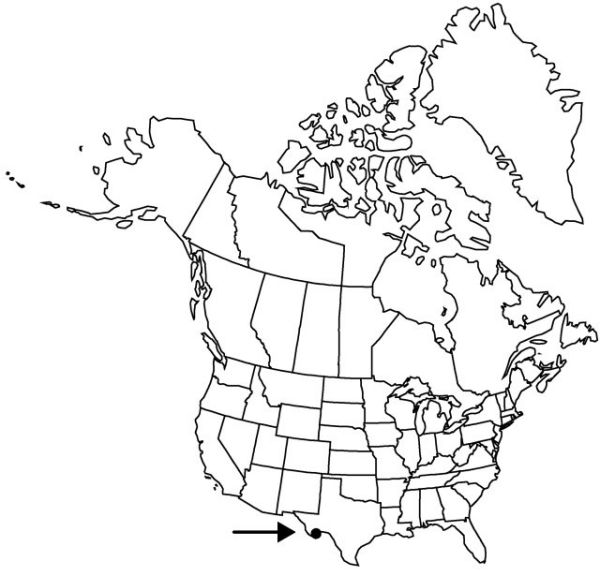Yucca rostrata
Rep. (Annual) Missouri Bot. Gard. 13: 68, plates 40–42, plate 84, fig. 3, plate 93, fig. 2. 1902.
Plants solitary or forming colonies of rosettes, caulescent, arborescent, 2.5–3.6 m, not including inflorescence, 1.8–3.2 dm diam; rosettes each with more than 100 leaves. Stems 1–several, erect, mostly simple, occasionally 1–3-branched. Leaf-blade linear, often twisted, flat to concavo-convex, widest considerably beyond middle, 25–60 × 1.2–1.7 cm, glaucous, smooth, margins minutely denticulate, lemon yellow, hyaline, apex spinose, spine-tipped. Inflorescences paniculate, arising just within or beyond rosettes, ovoid, 3–10 dm; branches up to 3.8 dm; bracts erect; peduncle sometimes scapelike, 0.3–1 m, less than 2.5 cm diam., glabrous or glabrescent. Flowers pendent; perianth globose to campanulate; tepals distinct, white, narrowly ovate, 4.2–5.2 × 1.1–2 cm, apex sharply acuminate; filaments 1.7–2 cm; pistil 2.5–3.5 cm; style white, 6–14 mm; stigmas lobed. Fruits erect, capsular, dehiscent, ovoid to ellipsoid, rarely constricted, 4–7 × 1.8–2.5 cm, dehiscence septicidal.
Phenology: Flowering spring.
Habitat: Rocky mountain slopes, canyon bottoms
Elevation: 700 m
Distribution

Tex., n Mexico (Coahuila)
Discussion
In the United States, Yucca rostrata is restricted to Brewster County, Texas. It is closely related to Y. thompsoniana (K. H. Clary 1997), which is perhaps just a northern variant of this species.
Selected References
None.
Lower Taxa
"thick" is not a number. "thin" is not a number."dm" is not declared as a valid unit of measurement for this property."dm" is not declared as a valid unit of measurement for this property. "dm" is not declared as a valid unit of measurement for this property."dm" is not declared as a valid unit of measurement for this property.